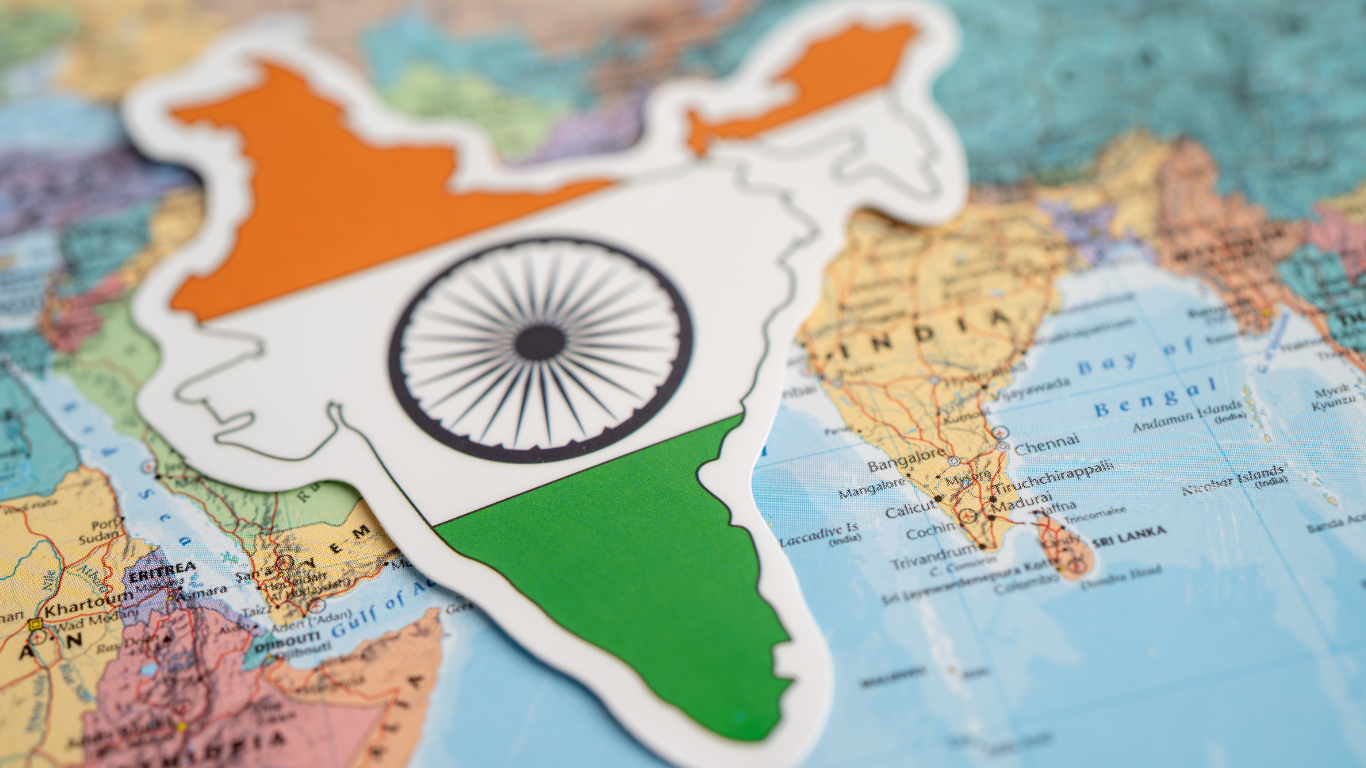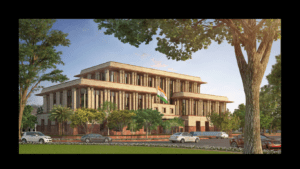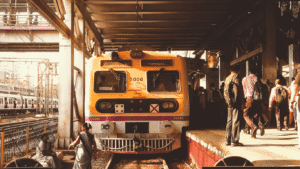India, a vibrant and diverse nation, comprises 28 states and 8 Union Territories, each with unique cultures, capitals, and languages. From the Himalayan heights of Himachal Pradesh to the coastal charm of Goa, every state contributes to India’s rich tapestry. The capitals are hubs of governance, culture, and commerce, while languages like Hindi, Tamil, and Assamese reflect centuries-old traditions. With over 1.4 billion people, India’s states showcase unity in diversity through festivals, cuisines, and histories. This article details the 28 states, their capitals, and primary languages, correcting the earlier error that listed Jammu and Kashmir as a state. Jammu and Kashmir is a Union Territory, split from its former state status in 2019. We’ll explore each state’s cultural and geographical highlights, celebrating India’s dynamic identity through its administrative and linguistic landscape. Let’s journey through the 28 states, uncovering their capitals and the languages that shape their stories.
Northern States of India
Northern India, cradled by the Himalayas and fertile plains, is known for its breathtaking landscapes and deep-rooted history. States like Punjab and Uttarakhand blend natural beauty with cultural richness. Capitals such as Chandigarh and Dehradun are centers of administration and tourism, while languages like Hindi and Punjabi resonate with the region’s diversity. The north hosts ancient temples, Mughal forts, and lively festivals like Diwali and Baisakhi. Its cuisine, from Punjabi sarson da saag to Himachali dham, delights food lovers. Bordering countries like Pakistan and China, these states maintain strong identities shaped by trade, invasions, and traditions. Let’s explore the northern states, their capitals, and languages, noting that Jammu and Kashmir, previously a state, is now a Union Territory with Srinagar (summer) and Jammu (winter) as capitals, and Kashmiri, Dogri, and Hindi as key languages.
Himachal Pradesh
Himachal Pradesh’s capital, Shimla, is a picturesque hill station with colonial architecture and snowy winters. Nestled in the Himalayas, the state is famed for apple orchards, trekking trails, and temples like Kedarnath. Hindi is the primary language, with Pahari dialects like Kangri spoken in rural areas. Himachali culture shines through festivals like Kullu Dussehra and dishes like siddu. The state’s cool climate and scenic spots, from Manali to Dharamshala, attract tourists year-round. Its languages carry tales of ancient tribes and mountain life, blending with modern tourism to make Himachal a northern gem, offering serene beauty and warm hospitality.
Punjab
Punjab’s capital, Chandigarh, a planned city shared with Haryana, is known for its modern design and green spaces. Called India’s breadbasket, Punjab thrives on agriculture, with golden wheat fields and the vibrant Baisakhi festival. Punjabi, written in Gurmukhi, is the main language, rich in folk songs and poetry. Sikh culture dominates, with Amritsar’s Golden Temple as a spiritual hub. Punjabi cuisine, like butter chicken and makki di roti, is loved nationwide. The language’s lively tone and Punjab’s warm hospitality make it a cultural powerhouse, radiating energy and pride in northern India.
Haryana
Haryana shares Chandigarh as its capital, a modern city surrounded by fertile farmlands. Known for wrestling, folk dances like Ghoomar, and historical sites like Kurukshetra, tied to the Mahabharata, Haryana blends tradition with progress. Hindi is the primary language, with Haryanvi dialects adding local flavor. The state’s cuisine, featuring bajra roti and lassi, reflects its rustic roots. Cities like Gurgaon showcase rapid urban growth. Haryana’s languages carry stories of bravery and community, while Chandigarh’s urban vibe highlights modernity, making the state a dynamic northern contributor to India’s diversity.
Uttarakhand
Uttarakhand’s capital, Dehradun, lies in the Doon Valley, known for its schools and pleasant climate. Dubbed Devbhoomi (Land of Gods), the state hosts pilgrimage sites like Haridwar and Rishikesh, plus Himalayan peaks like Nanda Devi. Hindi is the main language, with Garhwali and Kumaoni dialects spoken in the hills. Festivals like Kumbh Mela and dishes like aloo ke gutke define its culture. Uttarakhand’s rivers, like the Ganges, and trekking routes draw adventurers. Its languages, steeped in mountain lore, reflect a spiritual and rugged identity, making it a northern treasure.
Uttar Pradesh
Uttar Pradesh’s capital, Lucknow, is a city of nawabs, known for its Awadhi cuisine and architectural gems like Bara Imambara. The state, home to the Taj Mahal in Agra, is India’s most populous, with rich cultural heritage. Hindi is the primary language, with Awadhi and Bhojpuri dialects widely spoken. Festivals like Diwali and dishes like kebabs highlight its vibrancy. Uttar Pradesh’s historical cities, like Varanasi, draw spiritual seekers. The language’s poetic tone and the state’s blend of tradition and modernity make it a northern giant, shaping India’s cultural narrative.
Western States of India
Western India, along the Arabian Sea, mixes vibrant culture with economic strength. States like Gujarat and Maharashtra drive trade, while Goa’s beaches attract global visitors. Capitals like Gandhinagar, Mumbai, and Panaji are bustling centers, showcasing progress and heritage. Languages such as Gujarati, Marathi, and Konkani add to the region’s diversity, heard in folk songs and films. From Rajasthan’s desert forts to Goa’s Portuguese legacy, the west is rich in history, festivals like Navratri, and foods like vada pav. The region’s dynamic spirit, from Mumbai’s Bollywood to Gujarat’s markets, is vital to India. Let’s explore the western states, their capitals, and languages.
Rajasthan
Rajasthan’s capital, Jaipur, the Pink City, is famed for its forts, palaces, and bustling bazaars. The state, known for its Thar Desert and royal history, features landmarks like Jodhpur’s Mehrangarh Fort and Udaipur’s lakes. Hindi is the main language, with Rajasthani dialects like Marwari widely spoken. Rajasthani culture, with colorful turbans, Ghoomar dances, and spicy dal baati, is iconic. Festivals like Pushkar Mela draw crowds. The language’s poetic tone carries tales of kings and warriors, while Jaipur’s blend of tradition and modernity makes Rajasthan a cultural heart of western India.
Gujarat
Gujarat’s capital, Gandhinagar, is a planned city near Ahmedabad, a major trade hub. Mahatma Gandhi’s birthplace, Gujarat is known for its textile markets, the Rann of Kutch desert, and Gir National Park’s lions. Gujarati is the primary language, rich in literature and proverbs. Navratri’s garba dances and dishes like dhokla define its culture. Gujarat’s business spirit shines in its ports and industries. The language’s warmth and the state’s vibrant markets make it a western powerhouse, blending heritage with economic growth.
Maharashtra
Maharashtra’s capital, Mumbai, is India’s financial and film capital, home to Bollywood and the Gateway of India. Stretching from coastal Konkan to the Deccan Plateau, the state features historic caves like Ajanta and Ellora. Marathi is the main language, known for its poetry and plays. Ganesh Chaturthi and spicy vada pav showcase its culture. Mumbai’s fast-paced life contrasts with rural traditions. Marathi’s expressive tone and Maharashtra’s urban energy and historical depth make it a western giant, driving India’s cultural and economic pulse.
Goa
Goa’s capital, Panaji, is a charming coastal city with Portuguese-style buildings and riverfront views. India’s smallest state, Goa is famous for its beaches, nightlife, and churches like Basilica of Bom Jesus. Konkani is the primary language, with Portuguese influences, alongside Marathi and Hindi. Goan culture, with seafood curries, carnival, and fado music, blends Indian and Western vibes. Tourism fuels its economy. Konkani’s melodic sound and Goa’s laid-back, vibrant spirit make it a unique western state, a slice of paradise by the sea.
Eastern States of India
Eastern India, along the Bay of Bengal and Himalayan foothills, is lush and culturally rich. States like West Bengal and Odisha boast ancient histories, while Bihar and Jharkhand hold spiritual and industrial importance. Capitals like Kolkata and Bhubaneswar are cultural hubs. Languages like Bengali, Odia, and Maithili echo in folk songs and literature. Festivals like Durga Puja and foods like rasgulla define the east. Rivers, temples, and coal mines shape its identity, blending tradition with progress. Let’s explore the eastern states, their capitals, and languages.
West Bengal
West Bengal’s capital, Kolkata, is India’s cultural heart, known for colonial architecture, trams, and literary heritage. From Darjeeling’s tea gardens to Sundarbans’ mangroves, the state is diverse. Bengali is the primary language, famed for Tagore’s poetry and songs. Durga Puja and sweets like rasgulla define its culture. Kolkata’s vibrant arts scene and markets pulse with life. Bengali’s lyrical tone carries stories of revolution and devotion, making West Bengal a cultural beacon in eastern India, where history and creativity thrive.
Odisha
Odisha’s capital, Bhubaneswar, the “Temple City,” is home to ancient shrines like Lingaraj. Along the Bay of Bengal, the state is known for Puri’s Jagannath Temple and Chilika Lake. Odia is the main language, rich in classical literature and folk tales. Rath Yatra and dishes like dalma showcase its heritage. Odisha’s tribal culture and handwoven textiles add depth. Odia’s rhythmic flow and the state’s spiritual and coastal charm make it a unique eastern gem, blending faith with natural beauty.
Bihar
Bihar’s capital, Patna, on the Ganges, is tied to ancient empires like Magadha. A spiritual hub, it includes Bodh Gaya, where Buddha attained enlightenment. Hindi is the primary language, with Maithili, Bhojpuri, and Magahi widely spoken. Chhath Puja and litti chokha reflect its culture. Bihar’s rich history and growing economy shape its identity. Its languages, vibrant and earthy, carry tales of devotion and resilience, making Bihar a cornerstone of eastern India’s spiritual and cultural legacy.
Jharkhand
Jharkhand’s capital, Ranchi, is a green city in the Chota Nagpur Plateau, known for waterfalls and tribal heritage. Rich in minerals, it’s called India’s coal capital. Hindi is the main language, with tribal languages like Santhali and Mundari adding diversity. Sarhul and spicy thekua highlight its culture. Jharkhand’s forests and indigenous traditions are unique. Its languages, rooted in tribal rhythms, echo the land’s raw beauty, making Jharkhand an eastern state where nature, industry, and heritage coexist.
Southern States of India
Southern India, along the Indian Ocean, blends ancient temples, tech hubs, and coastal beauty. States like Tamil Nadu and Karnataka lead in culture and innovation, with capitals like Chennai and Bengaluru driving progress. Languages like Tamil, Telugu, Kannada, and Malayalam flow through literature and films. Festivals like Pongal and foods like dosa define the south. Its Dravidian heritage, hills, and beaches attract tourists. Southern states balance tradition with modernity, shaping India’s global image. Let’s explore their capitals and languages.
Tamil Nadu
Tamil Nadu’s capital, Chennai, is a coastal metropolis known for Marina Beach and classical music. With ancient Chola temples and Kanyakumari’s sunrise, it’s a cultural hub. Tamil, one of the world’s oldest languages, is primary, rich in poetry and cinema. Pongal and filter coffee define its culture. Chennai’s IT sector and arts scene thrive. Tamil’s lyrical beauty and Tamil Nadu’s blend of tradition and tech make it a southern powerhouse, radiating heritage and progress.
Karnataka
Karnataka’s capital, Bengaluru, is India’s Silicon Valley, famed for tech parks and pleasant weather. From Mysuru’s palaces to Coorg’s coffee estates, the state is diverse. Kannada is the main language, known for its literature and films. Dasara and bisi bele bath showcase its culture. Bengaluru’s cosmopolitan vibe contrasts with rural charm. Kannada’s expressive tone and Karnataka’s innovation and tradition make it a southern star, bridging old and new.
Andhra Pradesh
Andhra Pradesh’s capital, Amaravati, is a planned city under development, with Visakhapatnam as a key hub. Along the Bay of Bengal, it’s known for Tirupati’s temple and spicy cuisine. Telugu is the primary language, famed for poetry and Tollywood films. Sankranti and biryani define its culture. Andhra’s coastal plains and Krishna River add beauty. Telugu’s melodic flow and the state’s spiritual and culinary richness make it a vibrant southern state.
Telangana
Telangana’s capital, Hyderabad, is a tech and culinary hub, famous for Charminar and biryani. Formed in 2014 from Andhra Pradesh, it blends Mughal and Telugu heritage. Telugu is the main language, with Urdu prominent. Bathukamma and spicy curries highlight its culture. Hyderabad’s IT boom and Golconda Fort show its range. Telugu and Urdu’s poetic tones and Telangana’s mix of tradition and modernity make it a southern gem.
Kerala
Kerala’s capital, Thiruvananthapuram, is a coastal city with beaches and temples. Known as “God’s Own Country,” Kerala boasts backwaters, tea estates, and Ayurveda. Malayalam is the primary language, rich in literature and folk songs. Onam and appam define its culture. Kerala’s high literacy and greenery draw tourists. Malayalam’s soft cadence and the state’s serene beauty and progressive spirit make it a southern paradise.
Northeastern States of India
The Northeast, India’s “Seven Sisters,” is a region of lush forests, rivers, and tribal cultures. States like Assam and Manipur nestle in hills and valleys, with capitals like Dispur and Imphal as vibrant centers. Languages like Assamese, Manipuri, and Naga dialects reflect diversity. Festivals like Bihu and foods like bamboo shoot curry showcase uniqueness. Connected by a narrow corridor, the Northeast’s isolation breeds distinct traditions. Let’s explore these states, their capitals, and languages.
Assam
Assam’s capital, Dispur, part of Guwahati, sits on the Brahmaputra River. Known for tea gardens and Kaziranga’s rhinos, it’s a biodiversity hotspot. Assamese is the main language, with Bodo and Bengali also spoken. Bihu and fish curry define its culture. Assam’s silk and oil industries thrive. Assamese’s lively tone and the state’s natural wealth and traditions make it a northeastern cornerstone, blending rural charm with urban energy.
Arunachal Pradesh
Arunachal Pradesh’s capital, Itanagar, lies in Himalayan foothills, known for monasteries and tribal heritage. Bordering China, it’s home to diverse tribes and rare orchids. Hindi is widely used, with tribal languages like Nyishi and Adi prominent. Losar and bamboo-based dishes highlight its culture. Arunachal’s forests and rivers draw adventurers. Its languages, rooted in tribal lore, and raw beauty make it a northeastern gem, a wild frontier.
Manipur
Manipur’s capital, Imphal, is a valley city known for polo fields and Loktak Lake. Rich in dance and martial arts, it’s a cultural hub. Manipuri (Meiteilon) is the main language, with tribal dialects like Tangkhul. Lai Haraoba and spicy eromba define its culture. Manipur’s textiles shine. Manipuri’s poetic flow and the state’s arts and scenic beauty make it a northeastern treasure.
Meghalaya
Meghalaya’s capital, Shillong, the “Scotland of the East,” features pine forests and waterfalls. Known as “abode of clouds,” it has living root bridges. Khasi, Garo, and English are primary languages. Shad Suk Mynsiem and smoked pork dishes showcase its culture. Meghalaya’s music and wet climate are unique. Its languages, tied to tribal roots, and lush beauty make it a northeastern haven.
Mizoram
Mizoram’s capital, Aizawl, perches on hills, known for churches and markets. Bordering Myanmar, it’s lush with bamboo forests. Mizo is the main language, with English widely used. Chapchar Kut and rice-based dishes define its culture. Mizoram’s high literacy and tribal traditions stand out. Mizo’s melodic tone and the state’s serene hills and hospitality make it a northeastern gem.
Nagaland
Nagaland’s capital, Kohima, is a hilly city famed for the Hornbill Festival. Rich in tribal diversity, it borders Myanmar. English is the official language, with Naga dialects like Ao and Angami spoken. Festivals and smoked meat dishes highlight its culture. Nagaland’s shawls and warrior history are iconic. Its languages, full of tribal pride, and rugged beauty make it a northeastern star.
Tripura
Tripura’s capital, Agartala, near Bangladesh, is known for Ujjayanta Palace and lush forests. It blends Bengali and tribal cultures. Bengali and Kokborok are primary languages. Kharchi Puja and fish curries define its culture. Tripura’s bamboo crafts and tea estates thrive. Bengali and Kokborok’s warm tones and the state’s mix of plains and hills make it a northeastern jewel.
Union Territories of India
India’s 8 Union Territories, governed by the central government, include Jammu and Kashmir and Ladakh, formed in 2019 after the Jammu and Kashmir Reorganisation Act split the former state. Jammu and Kashmir, with capitals Srinagar (summer) and Jammu (winter), has a legislature like Puducherry. Kashmiri, Dogri, Hindi, and English are key languages. Known for Dal Lake and handicrafts, its economy relies on agriculture and tourism. Ladakh, with capitals Leh and Kargil, lacks a legislature. Ladakhi, Hindi, and English are spoken, with a culture tied to Buddhism and tourism in its stark Himalayan landscape. Other Union Territories include Delhi, Puducherry, Chandigarh, Lakshadweep, Andaman and Nicobar Islands, and Dadra and Nagar Haveli and Daman and Diu, each with distinct capitals and languages.
Conclusion
India’s 28 states, from Punjab to Tripura, create a vibrant mosaic of diversity and unity, with 8 Union Territories like Jammu and Kashmir and Ladakh adding unique dimensions. Each state’s capital, like Mumbai or Kolkata, pulses with life, while languages like Tamil and Assamese carry centuries of stories. From Himalayan peaks to coastal shores, festivals to foods, India’s states reflect a shared spirit. Correcting the earlier error, Jammu and Kashmir is a Union Territory, not a state, since 2019. Exploring these states and their capitals reveals a nation where tradition meets progress, inviting all to discover its endless wonders.




